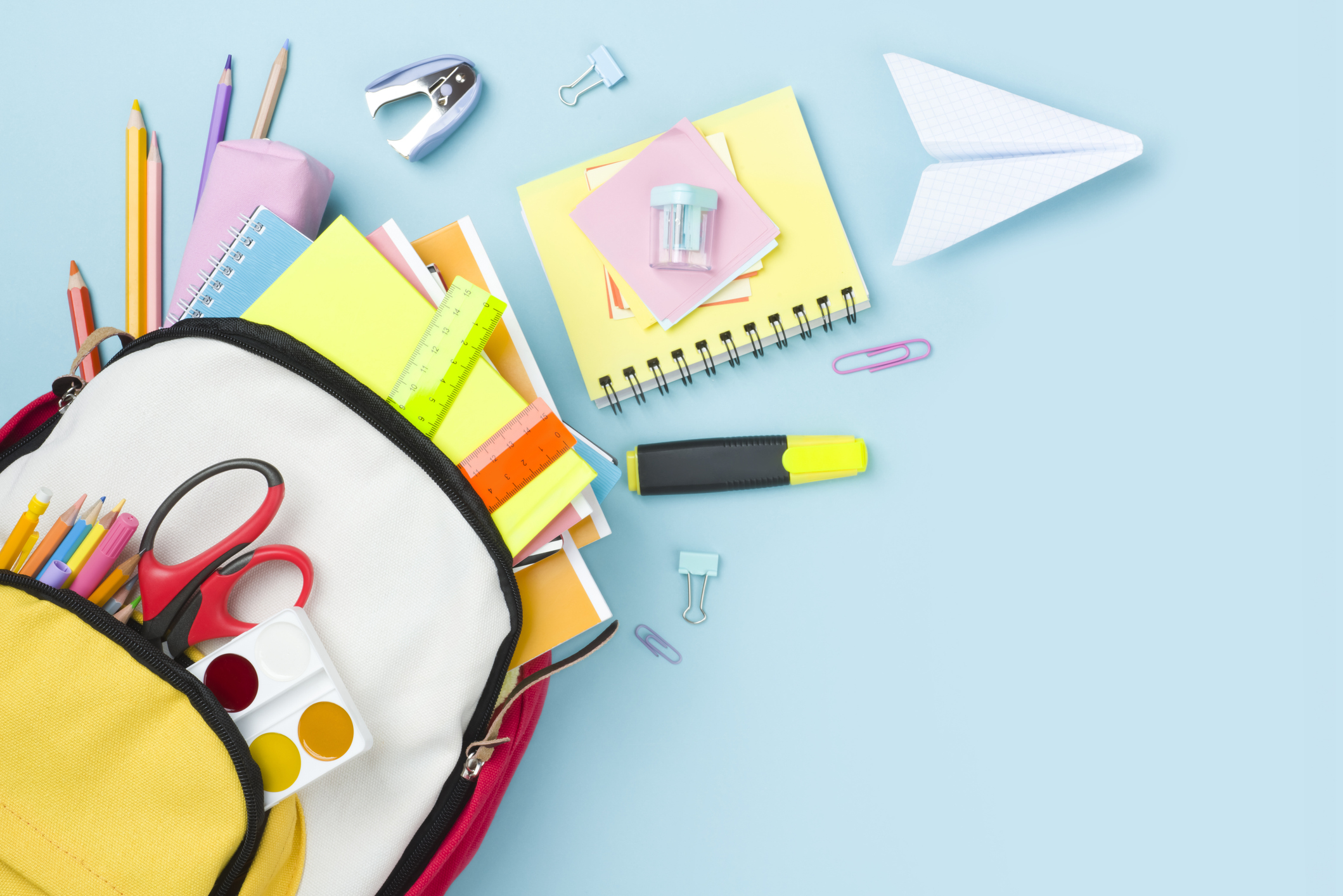12 Strategies to Score Back-to-School Savings
Here's how to avoid spending too much on clothing, electronics and school supplies.

The start of the school year is still a month away for many students across the nation, but plenty of families likely are already doing their back-to-school shopping. And they're likely to shell out hundreds of dollars if last year's school-related spending is any indication of what to expect this year. Families with children in kindergarten through 12th grade spent nearly $690, on average, on school-related items in 2012, according to the National Retail Federation. That's a hefty price tag for back-to-school shopping.
Families can keep back-to-school costs under control, though, by developing a shopping strategy. Here's how:
1. Take inventory of what your kids have. Don't assume that your kids have outgrown all their clothes and need a new wardrobe. Take the time to make them try on what is in their closet and drawers to figure out which clothing items they really need. Then plan on buying items that can easily be mixed and matched.
From just $107.88 $24.99 for Kiplinger Personal Finance
Become a smarter, better informed investor. Subscribe from just $107.88 $24.99, plus get up to 4 Special Issues

Sign up for Kiplinger’s Free Newsletters
Profit and prosper with the best of expert advice on investing, taxes, retirement, personal finance and more - straight to your e-mail.
Profit and prosper with the best of expert advice - straight to your e-mail.
2. Set a budget. Let your children know how much they can spend so they buy only what they need. You can motivate them to keep spending under control by telling them they can keep any cash they don't spend.
3. Share the cost. Ask children who receive an allowance or who have money from a summer job to chip in -- especially if they want to buy more than your budget allows. If kids are expected to help pay for back-to-school items, they'll be more price-conscious.
4. Time your shopping right. Retailers offer some of the year's lowest prices on pens, pencils and notebooks in August. For clothing, you'll find deep discounts on summer apparel now (and you can layer light-weight clothing with sweaters, jackets or long-sleeve shirts to carry kids into fall) and look for sales on Labor Day weekend. Also, 17 states exempt back-to-school purchases from sales taxes on certain days. See my guide to sales-tax holidays .
5. Shop online. You may be more tempted to overspend when shopping in a mall, where you're surrounded by so many options, tempting displays and impulse buys in the checkout aisle. If you shop online, you can give your kids a choice of just a couple of retailers that have coupon codes -- which you can get from sites such as CouponCabin.com, Coupons.com and CleverTeens.com -- and free-shipping offers (see FreeShipping.org).
6. Use price-comparison sites and apps. To make sure you're getting the best deal on a computer, electronic gadget or school gear (such as a backpack), use a price-comparison site or smart-phone app for in-store shopping. Amazon.com, PriceGrabber.com and Google Product Search are great sites for price comparisons. And we recommend Amazon Price Check (Android, iPhone), Google Shopper (Android, iPad, iPhone) and RedLaser (Android, iPhone, Windows Phone) for scanning barcodes while you're in a store to compare prices with other retailers.
7. Buy discounted gift cards. Buying a discounted gift card to use for your own shopping is a good way to score additional discounts. For example, buy a $100 Gap gift card for $90 (instant $10 savings). CardCash and Gift Card Granny sell merchants' gift cards for less than face value.
8. Check for student discounts. Some stores, such as Apple, offer discounts just for students. All it asks for is your name and school you are attending.
9. Sign up for e-mail or Twitter alerts from back-to-school retailers to know when their items go on sale.
10. Buy used. Textbooks are cheaper used (and even cheaper when you rent them). See How to Cut Your Textbook Costs in Half -- or More for Web sites that will help you get a deal on books. Also consider buying items such as computers refurbished rather than new.
11. Swap rather than buy. Outfitting your kids for school doesn't have to mean a trip to the store. Some kids will be content with clothing that is "new to them." For example, my younger daughter is usually pretty happy to get new clothes in the form of hand-me-downs from her big sister. So consider hosting a clothing swap with friends who have children similar in age and size to yours to freshen up your kids' wardrobes.
12. Buy items in bulk to take advantage of larger discount coupons that give bigger savings for spending more. This is a good strategy to score savings on school supplies, such as paper, pens and pencils. Places such as Staples offer bulk discounts and free shipping.
A final note: Don't buy something just because it's cheap. This especially applies to school gear that kids can use year after year. For example, if you purchase a quality backpack that costs more than a bargain model, you'll likely save money over the long run because you won't have to shell out money each year to buy a new one.
Profit and prosper with the best of Kiplinger's advice on investing, taxes, retirement, personal finance and much more. Delivered daily. Enter your email in the box and click Sign Me Up.

Award-winning journalist, speaker, family finance expert, and author of Mom and Dad, We Need to Talk.
Cameron Huddleston wrote the daily "Kip Tips" column for Kiplinger.com. She joined Kiplinger in 2001 after graduating from American University with an MA in economic journalism.
-
 How to save for college and retirement at the same time
How to save for college and retirement at the same timeSponsored Consider these steps to balance two of life’s most significant financial goals.
-
 8 ways to potentially lower your taxes
8 ways to potentially lower your taxesConsider these strategies to potentially reduce your taxes.
-
 6 common tax mistakes for investors to avoid
6 common tax mistakes for investors to avoidSponsored Watch for these common tax mistakes to avoid for investors, to help manage the impact of taxes on your portfolio.
-
 21 Last-Minute Gifts for Grandparents Day 2025 to Give Right Now
21 Last-Minute Gifts for Grandparents Day 2025 to Give Right NowHoliday Tips Last-minute gifting is never easy. But here are some ideas to celebrate Grandparents Day.
-
 Texas Sales Tax-Free Weekend 2025
Texas Sales Tax-Free Weekend 2025Tax Holiday Here's what you needed to know about the Texas sales tax holiday.
-
 Alabama Tax-Free Weekend 2025
Alabama Tax-Free Weekend 2025Tax Holiday Here’s everything you need to know about the 2025 back-to-school Alabama sales tax holiday.
-
 The Sweet 23: States Where Twix and Kit Kat Avoid the ‘Candy Tax’
The Sweet 23: States Where Twix and Kit Kat Avoid the ‘Candy Tax’State Taxes There’s something spooky this Halloween, and it’s not just the ghouls. Find out if your state’s sales tax takes a bite out of sweet savings.
-
 Florida Back-to-School Tax-Free Holiday 2025
Florida Back-to-School Tax-Free Holiday 2025Sales Taxes The new tax-free holiday in Florida brought month-long savings on computers, clothing and other school supplies.
-
 Five Reasons You Shouldn't Shop Amazon's Prime Big Deal Days
Five Reasons You Shouldn't Shop Amazon's Prime Big Deal DaysSmart Buying Are Amazon Prime Big Deal Days still a good deal? We'll break it down.
-
 Five Ways to Save on Vacation Rental Properties
Five Ways to Save on Vacation Rental PropertiesTravel Use these strategies to pay less for an apartment, condo or house when you travel.
-
 How to Avoid Annoying Hotel Fees: Per Person, Parking and More
How to Avoid Annoying Hotel Fees: Per Person, Parking and MoreTravel Here's how to avoid extra charges and make sure you don't get stuck paying for amenities that you don't use.